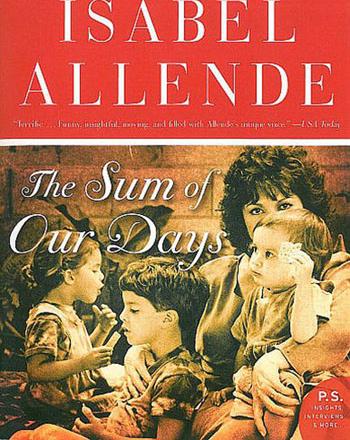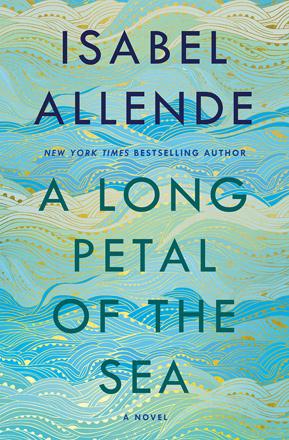You are here
Life-changing journeys
By Sally Bland - Feb 16,2020 - Last updated at Feb 16,2020

In the Midst of Winter
Isabel Allende
Translated from the Spanish by Nick Caistor and Amanda Hopkins
London: Scribner, 2018
Pp. 340
The title of this novel is a quote from Albert Camus and serves as the overarching metaphor for a tale in which joyful new beginnings erupt from human landscapes of pain and sorrow. This is not one of Isabel Allende’s epic historical novels. It is set in today’s New York, and the now-time plot lasts only a week, but by exploring the three main characters’ backgrounds, Allende links the two Americas and the very current issue of immigration with Latin America’s history of US-sponsored dictatorships and extra-judicial killings.
During an unprecedented snowstorm, a chance car accident opens a Pandora’s box and draws three lonely people together as they undertake a road trip to resolve the problem that popped out of the box. It proves to be life changing. As they journey in the snowstorm, they “ventured far from their known and safe terrain, and as they did so they revealed who they really were. Their strange adventure was creating a mysterious bond between them”. (p. 305)
Richard, a professor at NYU specialising in Brazil, has almost (but not really) succeeded in putting his past of sorrow and guilt behind him via a strictly regimented life and anti-anxiety drugs. “Afraid of falling into the trap of romanticism, which he had avoided for twenty-five years, he never asked himself why he rejected love, because the answer seemed obvious: it was his inescapable penance” for tragic mistakes which are only gradually revealed. (p. 17)
In contrast, Lucia, a Chilean woman whom Richard hired to teach at the Latin America Studies Centre he heads, is avidly searching for love. In her sixties like Richard, she has long been attracted to him, but gets no response until the fateful accident, plus her own irrepressible exuberance, throws them together. Like Richard, there is a lot of pain in her past, some personal, some connected to the 1973 coup in Chile, but she has drawn opposite conclusions, determined to live life to the utmost for whatever years she has left.
The life of Evelyn, a young Guatemalan and the third major character, is the most precarious. She has remained an undocumented migrant in the US despite clear rights to asylum, having fled the gang violence that decimated her family, and which the priest of her village attributes to “an endless war against the poor. Two hundred thousand indigenous people massacred, fifty thousand disappeared, a million and a half displaced”. (p. 88)
Evelyn makes the harrowing journey from Guatemala across Mexico and the Rio Grande to reunite in Chicago with her mother, but extenuating circumstances force her to move on. She ends up in New York as a nanny for a child with cerebral palsy. She likes the job and is good at it, but remains insecure, for the man of the house is involved in a shady business, abusive to his wife and child, and the most clearly delineated villain in the novel (aside from the various military dictators).
Combining the histories of these three makes “In the Midst of Winter” simultaneously a love story, a murder mystery, a protest against injustice, and a tale of human redemption. It is also about different understandings of death and how to honour the dead. And, amazingly, in the midst of scary, violent and tragic events, Allende inserts slices of wry, ironic humour, most often voiced by Lucia at Richard’s or her own expense. One is tempted to view Lucia as Allende’s own voice; many of the events of her fictional life echo what is known of Allende’s biography, and her outlook on life is what one imagines Allende’s to be.
Though there are traces of Allende’s renown magical realism in this novel, the real magic emanates from humans’ ability to empathise. Allende is a master at character development, and the catalyst for the three main characters’ transformation is love, acceptance and determination to lead life to the fullest.
Secondary characters are also fully portrayed, such as Lucia’s unconventional daughter and her mother who spends years searching for the son who disappeared at the hands of Pinochet’s dictatorship. There is also Evelyn’s grandmother, and Richard’s father who participated in the Sanctuary Movement of the 1980s to protect the thousands of unaccompanied children who streamed north across the US border. The most definitive statement of the issues raised by the novel is delivered by Evelyn’s normally reticent stepfather to an immigration officer who questions the girl’s status: “This girl is a refugee. No one is illegal in this life, we all have the right to live in this world. Money and crime do not respect borders. I ask you, sir, why we human beings should do so.” (p. 225)
Even nature assumes the proportions of a character as the intensification and waning of the snowstorm rival human initiative in steering the plot. Illustrating the theme, “In the midst of winter, I finally found there was within me an invincible spring”, Allende, once again, has created a compelling story, full of passion and insight. It is hard to put this book down as she carefully layers the plot to entice the reader onwards. “In the Midst of Winter” is available at the University Bookshop.
Related Articles
This is the sequel to “Paula”, the memoir Isabel Allende wrote in response to the tragic death of her daughter in 1992.
A Long Petal of the SeaIsabel AllendeTranslated from the Spanish by Nick Caistor and Amanda HopkinsonNew York: Ballantine Books, 2020Pp.
The Japanese LoverIsabel AllendeTranslated by Nick Caistor and Amanda HopkinsonNew York: Atria Books, 2015Pp.


















